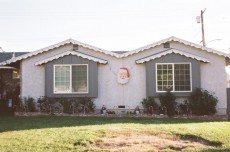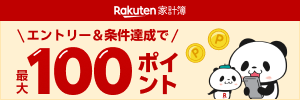Fiction Issue: Interview with Clint Woodside x Dan Monick about “Vineland”
NeoL / 2017年6月24日 19時4分

Fiction Issue: Interview with Clint Woodside x Dan Monick about “Vineland”
Dan Monick|no title|2017
(C)Dan Monick
6月初旬、中目黒のギャラリーVOILLDでLAの写真家による二人展“Vineland”が開催された。題材はLAの中でも異質な存在感を放つ街、サンフェルナンド・バレー。時が止まったような寂しさとアウトサイダーな雰囲気を持った街だ。
気持ちの赴くままに惹かれた対象を撮るということ。題材を最大に活かすためになにを優先するか。互いの視点を分け合い、理解しあうこと——この展示のために来日したふたりと話してみえてきたことは、モノづくりだけではなく、誰もが日々の生活において置き換えることができる“在り方”。
さらに、タイムラインのスピードで全てが流れていくかのような今日において、それぞれにインディペンデントな出版レーベルを運営するふたりに、LAの出版業界の現状からSNSとの向き合い方を聞いた。
——今回の展示プロジェクトが生まれた経緯を教えてください。なぜこのサンフェルナンド・バレーを題材に選んだんですか。
Dan「俺は田舎で育って、ロサンゼルスに移ってきて15年くらいになる。このサンフェルナンド・バレーには一瞬にして惹かれて、それからずっと惹かれ続けているんだ。ここは魅力的な場所とは言えないし、住人もあまりいい印象を与えるような感じじゃない。でも、だから惹かれてるのかも。人ってアウトサイダー(よそ者)に魅了されたりするじゃない? 俺は、ここで感じる独特な雰囲気に焦点を定めていたんだ。最初はこのヴァインランドという一つの通りを撮ろうというアイデアで何マイルも何マイルも車で走り続けたんだけど、大きすぎたんだよね(笑)」
Clint「そう、だから違う方法にしようとなったんだ(笑)。そもそも俺たちは、何か変わった場所を撮ろうなんて考えてなかったし、計画やアイデアも敢えて決めなかった。何か形があるものだったり、何かを完成させるような物質を探していたわけではなく、もっと本質的で精神的な何かを探していたんだよ。だから何かを撮るためや得るための行為より、ただその場所に足を運んで狩りに来たという感じがすごくよかったんだ」
——既存のLA像と違う場所を撮りたい気持ちもありましたか?
Clint「まぁ、今まで違う側面のLAはたくさん見せられてきたね」
Dan「でもサンフェルナンド・バレーはないな。ここはロサンゼルスの一部であるけれども、ロサンゼルスではないーーなんというか、双子みたいなものかもね。でも、ここにいる人たちは他に比べて信じられないくらい違う。お互いに良い印象を持っていないんだ。ロサンゼルスで育った人たちにサンフェルナンド・バレーのことを話すと必ずネガティヴな反応が返ってくる。みんな嫌いなんだよ」
Clint「ここはLAから孤立しているからね」
Dan「もちろんロサンゼルスとは繋がっているけど、『やったー! 休暇が取れたからここにドライヴに出かけよう!』ってことにはならないな。地理的にも、物理的にもロサンゼルスなんだけど、全く別の場所。例えば、Hollywood Hills やValleywood Hillsと言ってもいいかも。
この場所のことは歌の歌詞にも出てきたり、『Vallery Girl』を始めいくつかの映画にも出ているよ。別にみんなのロサンゼルス像を変えようとしているわけではない。ただ、俺たちはこの場所が持つ不思議な魅力を見せたいんだ。個人的にはかなり大好きな場所だし、ただシンプルにこの場所を見せたいだけなんだよ」
(c)Clint Woodside
(C)Dan Monick
——二人展ということで、どういう風に撮影し、セレクトして、ビジュアルトレーニングをしたんでしょうか。
Dan「俺はこの場所に何度も来たことがあるんだけど、Clintはほとんど来たことがない。でも二人とも似たような撮影をしているのが面白いよね。二人にはいろんな共通点があるけど、彼は俺と同じことを感じているんだなって、言語化できない不思議な感覚を覚えるよ。
俺たちはほとんど一緒に撮影をした。同じ被写体に目が向いたり、一人が見つけたものを二人で撮影したり、一人が最初に見落としたものをもう一人が撮る、最初に見落とした一人が戻って同じものを撮るーーなんだかお互いの審美眼が試されているような不思議な感覚を覚えたよ」
Clint「今回の撮影を通して、お互いへの理解や共有することの素晴らしさを学んだ。誰が撮ったからとか、誰が好きだからとか、そのようなことよりも良い作品を作っていこうということに集中した。この場所が持つ独特な雰囲気を表現することに重点を置いたんだ」
Dan「そう! 共通点がある俺たちだけれども、やはり挑戦でもあったと思うよ。俺は長い間あの場所に足を運んでいたけれども、まだどのように表現したら良いのか分からない。あの場所に数回しか足を運んだことがない人は、何が起こっているのかさえ全く理解出来ないと思うし」
Clint「俺は完全に観光客みたいな感じだし(笑)。街との関係は本当に全く違うけど、制作のスタート地点は確実に同じ場所からだったね。俺たちは、今回展示を深く理解してもらうためにこの写真集を作ったんだけど、それも『VINELAND(ヴァインランド)』というプロジェクトの一環で、展示をすることもそのプロジェクトのうちの1つなんだ」
Dan「展示はcommune のミユキとの話から始まった。俺たちが日本で展示をしたいと言ったら、『じゃぁ、何の展示をするの?』って聞かれたんだ。色々と考えていたんだけど、ある日、このプロジェクトの撮影をしていてこれだ!って閃いた」
Clint「写真集に関しては、最初に二人で同じ数の写真を出すことに決めて、そこから選んだ。最終的に60枚の作品が必要だから30枚ずつに分けた。各ページをめくるごとに、サンフェルナンド・バレーを行き交うような感じにしたかったんだ。(写真集をめくりながら)これがDanの写真でここに郵便ポストが写ってるよね。そして、これが俺の写真。(Clintが写した郵便ポストを指差す。- 真ん中の見開きの状態で、左側にDan、右側にClint。同じ郵便ポストが違う角度からそれぞれの写真に写されている。)そう、俺たちは同じ場所を撮ったんだ。そして、このDanの写真と俺の写真が境目になっていて、前半がDanの作品、後半が俺の作品になっている。
それで、そのアイデアを今回の展示にも用いることにした。サンフェルナンド・バレーを行き交うような感じだよね。でもそれぞれの作品が分かるようにしようということになって、Danの方が背が高いから上の方へ、で、俺は下の方になった(笑)」
Dan「背の高さは冗談だけどね(笑)。レイアウトに関しては、どうしたら興味深く且つストーリー性を見せられるかというところに重点を置いた。オレは大きく繋がるようなラインが好きで、色々と試行錯誤したよ。たまには、決断を下すのに理由はいらないのかも。考え過ぎなくて済むからね。
俺たちはそれぞれ30ロールのフィルムを使った。50枚ずつぐらい撮ったかな。で、展示には10〜12枚の作品が必要だったから、写真を現像してから床に並べてどの作品を展示に使うか決めたよ。座って眺めたり、大切な友達を集めて見てもらったり。誰が撮ったかは言わなかった。ただ、シンプルに床に並べた写真を動かしたり、眺めたりして、最終的に『これだ!』って瞬間が来るまで色々と試行錯誤したんだ。一サイエンスでもなんでもない、ただ心に忠実に選んだよ」
(c)Clint Woodside
(C)Dan Monick
——ふたりは元々『Vineland』のような写真を撮っていますよね。なぜそれほど街に惹かれるんでしょうか。人にも街にも個性があるけれど、なぜ人ではなく街なんでしょうね。
Clint「この質問は真意をついているね。多分、それぞれに違う答えがあると思う。
俺は、この世の中で俺たち人間が作り上げてきたものを見せていきたいからなんだ。人間が施してきたもの。人間の中で渦巻く感情と社会の動きを『モノ』を通して見せたいと考えている。
『モノ』を見た時、何かを感じるだろ? 例えば、この写真に写っている郵便ポストを見る時に感じることと、壊れてる郵便ポスト、または綺麗でパーフェクトな郵便ポスト、またはお店に置いてある郵便ポスト、全てにおいて違う感覚を得ると思うんだ。俺は常にその郵便ポストと繋がりのある人間だったり、その周りに存在するものだったり、そんな『モノ』の背景に存在する感情や動き、ストーリーなどを捉えようとしている。Danは違う答えがあると思うよ。なぁ、Dan?」
Dan「そんなことないよ。俺にとって『モノ』は人々のポートレイトを撮っているのと同じなんだ。人間が日々残し続ける跡とか、例えば、この看板を見て、誰がこの看板の下を通ったか、誰がこの看板を見たのか、誰がこの看板が立ててある場所に眠っていたのか、この場所で何が起こったのかとかね。この看板は誰かが誇りを持って作った。でも、時間と共に消えていく。そう、人々は必ず『モノ』に関係している。
俺の本職はポートレイトを撮ることなんだけど、たまに人間の存在しないポートレイトを撮ると、とてもリラックスできて好きなんだ。もちろん、人間のポートレイトを撮ることもとても好きだけれど、例えば看板は瞬きしないし、難しくもない、そんな『モノ』を撮るときはなんだか気をうまく抜けるんだ。分かるだろ? 人間を撮るときは色々な感情がエネルギーとして出されてるからさ。とにかく、Clintが話してくれたことはまさしく!って感じだったよ」
Clint「一番大切なこと、それは人間が全ての作品と繋がりがあるということ。この写真に写っている看板のことではないことだよ。作品に写されている場所やモノの背景には、素敵な時間や何か大変なことが起こった時間、若者がドーナッツを食べた時間のことーー実際に人間は写されていないけれども、全ては人間との繋がりを表現しているんだ」
(c)Clint Woodside
(C)Dan Monick
——なるほど。ClintはDeadbeat Club、DanはCash Machineという出版レーベルをやっているけれども、LAでの紙の状況はどうですか?
Dan 「LAのセルフパブリッシング事業はどんどん大きくなっていて、より多くの人たちが自費出版でzineや本を出していると思う。LA Art Book Fairも年々大きくなっているし、他にも小さなbook fairも増える一方だよ。
実際に、俺はまだコピー機を使って印刷して、手で折って、ホチキス止めでzineを作ったりもしているんだ。いろいろな人がzineの作り方について聞いてくることがあるけど、俺がまだ実際にそうやって手を使ったやり方でzineを作ってるのを滑稽だと思ってる奴もいるけど、その後に本の作り方について聞いてきてどれだけお金がかかるか教えると、びっくりしてちょっと怖気づいてるのがわかるんだ。(笑)
俺の好きな小さな出版社を挙げるとしたら、もちろんDeadbeat Club 、These Days、Hesse Press 、Fulcrum Press、そしてZoe Zagかな」
Clint「例えば一日中スマートフォンをスクロールしてインスタグラムを眺めているのは、座ってじっくりアイデアを出し合って、全ての写真をテーブルの上に並べて眺めることほど興奮しないと思うんだよね。
インスタで出てくるドーナツの写真を見ながら『この写真のなかで何が起こっている』なんて話したりしないだろう? 流れてくる写真を座って見ながら、それについて話すことに時間を費やすなんて俺らしくないしね。
ちなみに俺の写真はインターネット上ではうまく魅せられないんだ。それはその写真の一部にしかすぎないしね。ふさわしい環境に身をおいて座って、その時間を設けて見るってことも写真には含まれてるだろうから。
だからこそ、俺は写真出版レーベルを始めたんだ。そうやってじっくりと時間をかけて作ったり楽しんだりする時間やそこで生み出されるものを欲している。小さな出版レーベルはまさにその極みでもあると思っているよ」
Dan「俺はいつでもインスタを辞めることが出来るよ、100%ね。インスタは今や1つのコミュニケーションツールの1つで素晴らしいものなのも分かっているんだ。今日だって、たまたま街で出くわした若い子が、突然iphoneを取り出してインスタグラムを見せてきたんだ。彼は英語が話せないし、オレは日本語が話せない状況で、彼はインスタで俺とClintの写真展のオープニングの写真を指差して『これはあなたたちだよね?』って感じで。そこでインスタを通してコミュニケーションが産まれたことが最高にクールだな、と思った。
だけどそれと同時に、それはなんでもないことのようにも思える。
俺は、本があったから写真を撮り始めた。本はいつだって最高のものだよ。どんなことだってやり遂げられる気持ちにさせてくれる。
若い頃は仕事を抜け出して、欲しい写真集を探しに行ったりして、欲しかった本を見つけて『OMG!!』って本当に興奮してたよ。僕らはその流れの中に常に、そして永遠に存在するんだ。俺はそういうことをずっと続けていくだろうってことかな」
Clint「インスタグラムは無料で、誰でも何でもかんでもあまり気負わず投稿できて、それをすぐにお披露目できる。でもインスタに投稿したこともある写真だって、写真集の1ページとして印刷されることでお金がかかってもいるし、この写真をこのページに入れるという考えに至るまでに、僕らは何度も試行錯誤したんだ。出版はとにかく大変なんだよ」
Dan「同時にインスタは本を作る術を知らなかったり、または場を持ってない人たちにそういった場を与えてもくれてるよね。例えば、今日道で出会った若者も、インスタグラム自体が彼の作品のショーケースのような役割をしていたり。それはすごくいいものだよね。
俺らが若い頃にはなかったものを今持っているという世代的なもので、それはなかなか良いことではあるけど、なかった時代を恋しく思うのも正直なところだよ」
Clint「自分や自分の作品にとって、印刷されたモノであるのはとても大切だよ。ネットで見る作品は一瞬にして過ぎ去ってしまうけど、本だとゆっくり作品を見るし、自分の目の前でそれをしっかり消化することができる。
作り上げることが大変であればあるほど、実際に出来たものが愛おしく感じる。
またそれは限りあるものなので、最終的には本は売り切れになり、買えなくなる。
そういう意味で特別で収集価値のあるものと言える。俺は自分が取り組む全てのプロジェクトにおいて少部数の本を作っている。本はそのプロジェクトが世の中にどう働きかけるのか、何が欠けているのかを推し量る素晴らしいツール。出版は俺の活動にとって常に重要なことだね」
Dan「業界云々ではなく、俺はとにかく本が好きだし、印刷物が好き。そしてそれら印刷物を楽しむことが大好きだ。ただそれだけだよ。
自分が楽しめるものを作れば、それで他の人も楽しんでくれると思っている。誰かが自分の作品を見てくれているという充実感。それはいつも本当に素晴らしいことだよ」
(c)Clint Woodside
Clint Woodside × Dan Monick ‘Vineland’
会期:2017 年 6 月 2 日 ( 金 ) ~ 6 月 30 日 ( 金 ) 開廊時間:水ー金 12:00~20:00、土日 12:00~18:00 ※月・火・祝日休廊
オープニングレセプション:6 月 2 日 ( 金 ) 19:00~21:00 アーティストが在廊致します。是非お越しくださいませ。
会場:VOILLD(ボイルド)
〒153-0042 東京都目黒区青葉台 3-18-10 カーサ青葉台 B1F
アクセス:東京メトロ日比谷線・東急東横線「中目黒駅」出口より徒歩 12 分、 東急田園都市線「池尻大橋駅」東口より徒歩 8 分
主催・企画:VOILLD、commune
WEB:http://www.voilld.com
(C)Clint Woodside , Dan Monick Courtesy of VOILLD, commune
Clint Woodside|クリント・ウッドサイド
ニューヨーク州 バッファロー出身の写真家。
Let Me Die In My Footsteps(2013)、Build Us A Path(2014)、Undercover Cars(2016) など、これまでに 10 冊以上の写真集をリリースして おり、本国アメリカ以外にもロンドン、スウェーデン、中国、ソウル、オーストラリアなど世界各地で作品、写真集が販売されている。2014 年には Tobin Yelland や Lele Saveri(8ball zine) らと House of Vans のアジアツアーに参加。エド・テンプルトンをはじめ数多くのアーティストに支持 される写真出版レーベル「Deadbeat Club」の創設者、キュレーターとしても活躍している。現在はカリフォルニア州 LA 在住。
http://www.clintwoodside.com
http://www.deadbeatclubpress.com
Dan Monick|ダン・モニク
カリフォルニア州 LA 在住の写真家、ミュージシャン、ディレクター。 これまでに多くの出版物や広告、スヌープ・ドッグやケンドリック・ラマー、スクリレックスなどのポートレイト撮影を手掛ける。Showboat Gallery、Slow Culture、THIS:Los Angeles、Subliminal Projects、Soo Visual Arts Center など数多くのギャラリー、スペースで展示を開催。 2003 ~ 2006 年までは LA の Jeff Electric Gallery にて新人アーティストに焦点を当てたキュレーターを務め、2010 年 1 月~ 2011 年 2 月までは、 THIS: Los Angeles のメンバーとしても活動した。2012 年 10 月にリリースした写真集「Every Payphone On Sunset Blvd」で Ed Rucha の Books&Co 展に参加し、仲間のアーティストやムエタイ選手である Anthony Anzalone と「F/S Press」、さらに Atwater Village にアーティスト プロジェクトスペース兼出版レーベルである「Cash Machine」を設立。2016 年には 3 冊目となる写真集「Psychic Windows」を Cash
Machine からリリース。2016 年 12 月に Showboat Gallery で開催された個展「Silk Degrees」では、LA のストリートに対する彼なりの視点を 写真とネオン、樹脂、アクリルを用いて表現した 27 の作品を発表した。
http://www.dmonick.com
http://www.cashmachine.la
(C)Dan Monick
--Could you please tell me how you started this project and the reason why you chose this location "San Fernando Valley".
D: I have been living in Los Angeles for 15years and I have always been drawn to this location. I grown up in the completely different area, like the country, but something about it. That is very very drawn to, immediately after moving to Los Angeles. Like it’s not the cool part of the town, lots of people react very strongly to it, like in the bad way, you know. Maybe that is why, because people are drawn to the outsiders as people, I was sort of drawn to outsider as a place. Anyway, Clint and I started talking that we were trying to nail the capture this vibe, had starting with a formal idea - shooting one avenue, because that is very long, miles and miles of street - (Vineland), we just started driving out there but we thought that is too long and maybe NOT, it was too big.
C: There is no real set, idea or plan. We are trying to find the essence of something that is not an attainable product, not the physical thing. It is a mental, and a feeling. It is an instinct. It is more difficult to be able to have actual thing, like we are gonna shoot this way and so we will obtain that things that we are searching for. It is kind of just going out there like a hunting. we are up there hunting right now.
--Is it your intention to show the other side of LA?
C: The thing is, that has been shown plenty. So this is actually showing the other side of LA.
D: Vally is not, it is like people from. Vally is typically within a county, call Los Angeles. Yet it is not Los Angeles, like a joint twin, but that is like unbelievably different people, and one of them kinda, and both kinda hate each other, like they are not friends. People…like everyone, even today I talk to people grow up in LA about the Vally. They show the very strong reaction, people don’t like it.
C: This is like the outside of LA.
D: It is surrounded, it is literally a Vally and it is connected, it is like you can drive, you didn’t know you would be living for the Vally, you wouldn’t be like Wow you are taking a break. Now in the Vally it’s like a in stop whole time, physically, geographically. The big city hills right here, in the Vally is like the other side, Vallywood hills is like a hollywood hills, separate from Los Angeles of Vally.
C: Kinda part of this showing how…This is kind of pull out opposite of Los Angels that everybody knows that is to people never show the fancy side of LA.
D: But in the weird way it is not that we are avoiding that it is not about that place. It is about this place. Like..Vally girl the songs …..all that stuff, coupled different movies…It sorts like we are not trying to change anybody’s opinion of Los Angeles. We just kinda show this place has very weird reputation and I am personally, like totally in love with it and then…I mean I am just trying to make it clear that not about different side of LA, this is about this place.
--This project “Vineland” is made by two artists. How did you do visual training together?
D: I have been out there a lot, but Clint’s gone there a very little. We are both with similarity in our style. It was interesting two people who has two very different relationship with that one place and document in the similar way, you know. It is like, two things, one is like the people who, when I know they have the same feeling that I have about it. It is just like… you can not articulate. Very strange. It was something that very interesting. And we both are walking together and shoot mostly together so we see something, one thing will both catch our eye, whoever see the first, kind that gets playing on that shot sometimes. We both shoot the same thing and sometimes the person didn’t see it first. Then making me add it. It it very wired transparent of aesthetics and a documentation.
C: It has been a very good excises and understanding how to share and not have any big hung up sign who shot what. It is just like the best work to be in the show for the add it. what is the best way to articulate that who has the best version of that vibe, I guess that is the best way to put it. That it is not about the shot, whoever got the first, that’s nice but it is not about the shot, it is not that one count.
D: It is cool, again like that style is very similar yet still it is about trying, because I guess I have gone there forever, but still I have no idea how to express it hat someone’s gone there very little. It is just like I don’t even know what is going on up here, it is so huge.
C: I am definitely a tourist up there.
D: But it is like that cool thing is like there is still similarity in the way that our individual language that we both have.
C: The work is definitely from the same page.
D: Yah so it’s cool.
C: I think what the idea was we use the books to help us understand what the exhibition made of, the idea was the project and the exhibition was a part of project.
D: The exhibition, it is like talking to Miyuki(www.ccommunee.com), having her, you know “Hey we wanna do the show in Japan” and then she was like “What would you show?”, and then Clint and I were like “What should we show?”. Here is the idea and then one day we shot once when I like…this could work and then this is an idea! it sorts of born out of the doing the show and then could be do the another. The invitation and whole things was like talking to Miyuki.
-- How did you guys choose the photo together?
C: I think we kinda knew about how big for this. We are not done, this is not done. So many miles to go still but I mean for this we kinda wanted to have an equal amount of work so we just picked….for the books. We picked the number of images that we are allowed to pick for each of us for this and split in the middle, basically we wanna 60 images and I mean each of us can have 30. so we took those images and adding done into some sort of narrative, kind of get feel like you are coming through, you are flipping through this book and feels like you are flipping through the Valley. That’s what we took that idea and decided to bring the idea into the exhibition.
But in the book, it squishes in little…and one moment in the same frame…let me show you.
I don’t wanna go too deep and we are not supposed to go long winging but…So this is Dan’s photo, and then this right here is that mailbox, so this is my photo and we switched over shooting the same space, and then like all of this Dan’s and then here becomes all my works.
So it’s kind of like the flipping over the lap. That is kinda how we got head around, what we wanna to show and then when we got to the gallery, we actually kinda thoughts why don’t we make it still has like continues, like going through the Vally kind of vibe but still want to have a line to know whose is whose, looking at everything, we decided to be all Dan’s should go up top and all mind should go lower, basically Dan is much taller than me, not actually true but kinda true. (haha) do you feel that is fair?
D: Yah, we did look at the, we just tried to figure out how to layout so what would be interesting on the wall as well as help with the story. I love like one big long line like a time line, kinda looks like a map. That’s kinda start planing to it and then deciding. It was joke like Clint was like you should go high and mine should go low and holding them up on the wall and that sorts of, you know, sometime it is easier to make decision with no reason. So you don’t think about it.
So I turned it adding and deciding. We shot 30 rolls of films each, we each shot like 50 photos.
The show was 10~12 photos each and we knew trying to get down to the 12 photos each. We just like print out everything, and just lay on the floor, and sit there and like, you know, move the friends around, talk to each other and friends come in we love, tried to chase them. We didn’t tell them who took what, and we just sit and make them add it. Just play with it until you are like you feel right and even have like final add it to, and then we each took our own home and kinds was like, well, that is cool but I wanna put these two back it because I really like. It is all gut. It’s not like science. Physically laying the photos on the ground, little tiny flinging out, moving around.
--Both of you guys often shoot the town and street like "Vineland".I know Every town has a character of its own like people. Could you tell me the reason why you are attracted to the town or street.
C: Maybe we both have different answers for this, because this is deeper and deeper question for me. I have been trying to show what the world is, what we have all created as the humans, showing the things that we illuminated. So I am trying to show emotion and society through the enablement object that people that who has made.
When you show a certain item, it kinda gives you a feeling, like when you see and working mailbox and it’s different than that broken mailbox. It’s different than a nice and perfect mailbox, like the perfect mailbox that you would see in the store. So I always try to make it sorts out we see this mailbox, you start to think about the life of the person who uses that mailbox and all the things that surrounded around the mailbox all the time. That is me. Dan might have completely different answer.
D: Nah, most part is the same thing. it’s like these are all portraits that people to the degree. It’s about the traces that human created. Look at this sign, it’s like whose crossed that under the sign, who saw that sign, who sleeps and drawn to that place, and what happened to the place.
It is all about, who made this plate and sign, they had a pride and now it sorts of disappear, and then there are all still about people to the degree. Perfect laying the flower, all that kind of stuff either that technically still like still life or landscape, but they are not. I take lots of portrait of people. I do it also for living so it’s very nice. It’s sort of just a try to communicate the same things as communicate to take portrait of people without any people, as also I love taking portraits of people but it kind of relieves sometime because this is like the sign has never blinks and it’s not fussy. You know what I mean? It’s very relaxing to me, very medicated to try to just shoot stuff like that. We are people that has lots of energy, low energy, clean energy. that is part of it. Clint is pretty spot on it terms of is all about people.
C: This is all about people, that is the most important thing, not about the sign.
D: Because somebody made those.
C: This is about the good time that happened. Maybe that trouble that happened that after that…and then how this is like that period where that kids come eat doughnuts and drink and stuff. It is all about people. It is juts not showing the actual people.
--Both of you are running the small publishing labels, Deadbeat Club and Cash Machine. How do you feel/think about the current circumstances/situation of publishing/print industry in LA?? Is it popular and growing, to make zines/book among young kids and other generations in LA?? Like lots of people came up to you to ask about zine /book making?? To be contrary to the publishing industry, what would you think about Instagram?
D: It’s pretty big in LA. Seems like a ton of people are self/small run publishing. A lot of what I still do zine wise is on an actual copy machine and hand folded and stapled. When people ask me about it I think they find it pretty funny that I do a lot by hand still. Then when they ask me about books, once I start telling them the costs, they get a little scared off haha.
Yeah I think it is pretty popular around here. The LAABF gets bigger every year and little side fairs keep popping up.
Some favorite small publishers are Deadbeat Club, These Days, Hesse Press, Fulcrum Press Zoe Zag to name a few.
C: like doing this all day. (Scrolling down the Instagram)It is not as exciting as sitting down slowly (looking at the photo book), the idea to bring it to show everything down and actually look at this photo, like if you look at this photo on the Instagram, you are not gonna say what is going on…like these doughnuts, what it is all this about. It doesn’t like me sit and think about using the moment of and talking about. Where Instagram, you like it and you go under…but here(looking at the books) you have a moment to breath and be a part of it and be…yourself.
That my photography does not do very well on the internet. because my images/ works are about sitting, fitting and having the moments. It is lot of part of it because of that I started the publishing company.
D: I can get away without using Instagram. I totally will 100%. But sort of it is part of communicating. It is beautiful like today we run into this kid and he pulled up the Instagram and showed it to me. You know he spoke no English and we speak no Japanese. pulled up and start picture, you know it’s like, this is you guys, and we just communicated, Instagram is like pointing the picture and it’s really cool. I fall in the kid and know how to communicate, see what he is doing, it’s really beautiful. But on the same time, it is nothing. I start taking the picture because of the books. It’s like I make it no matter what kind of. when I was a kid, sneak out of the job I had and go get a photo book, and find the photo books like…OMG it’s like this !!!!!! and that we always be a part of it forever, but you know, I don’t know how to make it different, I just know that I personally gonna keep making it.
C: The other thing is Instagram is free.
D: Yha yha.
C: And funny this photos (showing the photo book) we have posted on Instagram, but this cost lots of money that, we sit and think and put lots of thoughts into what it should be. And in Instagram anyone could put anything up and it shows. I think this format(Book) kind of slow and make you try hard.
D: And the same time Instagram gets the venue for people who can’t or who don’t have the means to put something like phonebooks or put photographs together, it’s like a kid, today at the diner, he has shown his photos on Instagram…it is awesome, and it is super great. It is not a bad things that coming from the generation when I didn’t have stuff like that
now I do have stuff like that, I do kinda miss when we didn't have stuff like that.
C: For me, and the work I make, the printed page is very important. When looking at things on the internet and on our phones, work goes by in a flash. But when you have a book in your hands you are forced to slow down and actually digest the work in front of you. The fact is a physical object is great because it gives a bit of weight to the work... It kind of signifies "this is important." or “I made this for you... please have a look." It’s also something that is finite. Eventually these books will sell out and not be available anymore, so its a special, collectable thing. I make a small book for every project I work on. It’s a great tool to check in and see where how the project works and what’s missing. Publishing will always be important to my practice.
D:To be honest I don't have a lot of thoughts about the industry in particular. I love books and I love print. I love putting work I enjoy into print. That's about it. It's all about making things I enjoy and that I think other people will enjoy. That and the satisfaction of seeing someone see their own work in print possibly for the first time. That is always really great.
(c)Clint Woodside
関連記事のまとめはこちら
http://www.neol.jp/art-2/
外部リンク
この記事に関連するニュース
-
「私たちを人間として扱ってほしい」やまぬ爆撃、家族との別れ…ガザ脱出の友人を探し記者がエジプトへ「戻りたいけど誰も戻れない」【脱出者が語る惨状】
北海道放送 / 2025年1月18日 9時45分
-
この英語ってどんな意味?「agenda」
OTONA SALONE / 2025年1月6日 7時0分
-
UESHIMA MUSEUM ANNEX オープンのお知らせ ~ 2025年1月15日より、今津景展を開催
PR TIMES / 2024年12月23日 15時15分
-
スリーシェイク所属の早川大貴がクラウドネイティブ技術を推進するCNCF Ambassadorsに就任
PR TIMES / 2024年12月23日 10時45分
-
Shareholder Proposals to Japan Business Systems, Inc.
PR TIMES / 2024年12月22日 14時40分
ランキング
-
130代会社員の息子が「クレジットカード」の審査に落ちました。年収も「400万円」あるのになぜ?
ファイナンシャルフィールド / 2025年1月20日 2時10分
-
2個人情報バレる? 書かれた謎の「12桁の数字」で何が分かる? 違反歴は? 「最後のひと桁」で分かるコトは? 隠された秘密とは
くるまのニュース / 2025年1月20日 9時10分
-
3「フジCM差し替え」を"英断"と称える人への違和感 企業がCMを差し替える真の狙いは"制裁"ではない
東洋経済オンライン / 2025年1月20日 8時0分
-
4「新千歳空港まで迎えに来て!」180km離れた旭川に住む友人を“パシろうとする”カップルの末路。ほかの友人たちにも見放されたワケ
日刊SPA! / 2025年1月17日 8時51分
-
5ホンダが斬新「シビックタイプR」初公開! 精悍すぎる“真っ黒インテリア”採用で約600万円!「レーシングブラックパッケージ」どんなモデル?
くるまのニュース / 2025年1月20日 13時10分
記事ミッション中・・・
記事にリアクションする
![]()
記事ミッション中・・・
記事にリアクションする

エラーが発生しました
ページを再読み込みして
ください









